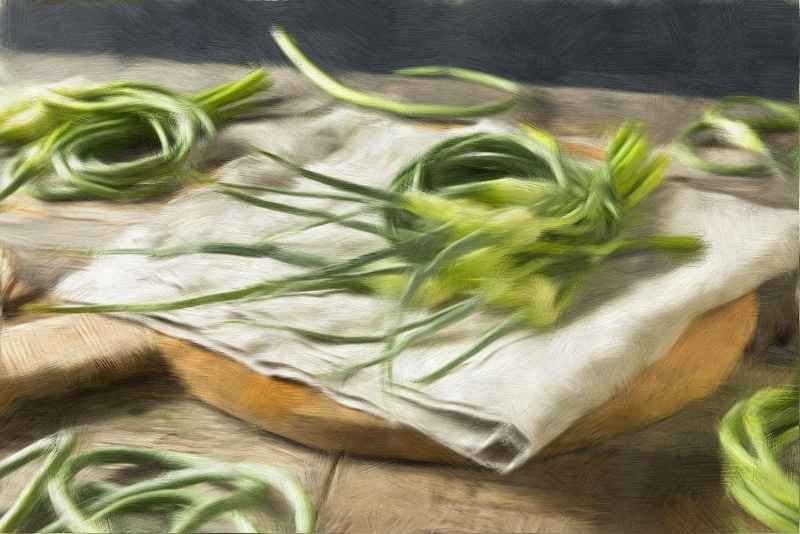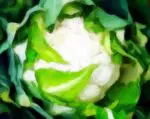Fermented Cauliflower – 4 Recipes You’ll Love
If you have ever wondered how to ferment cauliflower into a delicious food that you’ll love to eat you have come to the right place. Read On
You asked and we answered!
Many of you have asked help with fermenting cauliflowers and, as they are and will be a seasonal vegetables for several months, here we are sharing what we know.
Let me begin with saying that my wife is a broccoli, cabbage ( have you tried making sauerkraut? ), cauliflower and basically-anything-that-stinks-like-that lover, but me, not so much.
So over the years – and for my own sake I should add – I had to investigate, study and come up with interesting ways to eat the aforementioned smelly vegetables.
That still, to these days, my taste buds are very much NOT fans of.
Once again, and not surprisingly, fermentation came to my rescue.
We have invented and tried many different fermented cauliflower recipes but the four I am sharing with you today are those we love the most.
From the simplest way to ferment cauliflowers in brine to travelling around the world with unique flavour combinations.
Today you’ll learn:
- Basic Lacto-Fermented Cauliflower
- Mediterranean Style Fermented Cauliflower
- Nordic Fermented Cauliflower
- East Meets West Fermented Cauliflower
TELL YOUR FRIENDS
LITTLE SIDE NOTE
You know me; I often have side notes don’t I…
In this post when I say cauliflower I mean the head ( or curd ) with all its florets, but if you desire you are free to add a few young, small and tender leaves.
But keep in mind that you will be working with three very different consistencies – florets, leaves, stems – that, in spite of the same fermentation duration, will render completely different end results.
To avoid that we always ferment cauliflower leaves and stems separately ( and they turn out delicious btw ).
IMPORTANT: at the bottom of the article you will find clarifications and explanations about the recipe; I suggest you to read them
NOW TO THE RECIPES
Ok, I have another IMPORTANT side note.
If you are new to fermenting please read these:
as the information and instructions given are fundamental for a healthy and successful fermentation.
Basic Lacto-Fermented Cauliflower
As the name suggests this recipe is ideal for beginners, for those who don’t like to venture outside familiar tastes and for those with difficult palates in the family.
INGREDIENTS
- 1 cauliflower head
- salt
- water
- fresh aromatics of your choice ( optional )
STEPS
- Separate the cauliflower head into small florets and wash them thoroughly
- Remove any damaged part and weigh the remaining florets
- Now pack them quite tightly in a jar of your choice leaving the usual 3cm/1inch head space
- (OPTIONAL): mix in your chosen aromatics with the florets
- Fill the jar with enough water to fully submerge every floret, then pour the water out into a measuring jug
→ If you don’t have a measuring jug just prepare a container on a kitchen scale and pour in the water
- The time to prepare our fermentation brine has come so first calculate the total weight of cauliflower and water ( use the metric system! ) then 2.5% of that weight of salt.
- Fully dissolve all salt warming up the water if needed then pour the brine into the jar
- Repeatedly insert a chopstick, or a fork handle (or anything else you deem suitable for the job) amongst the florets to release any hidden air bubble
- Weigh the produce down until fully submerged then place a lid on the jar
- Ferment for 7-10 days at 18-20°C or 64-68°F then move the jar to a cooler area for 10-20 more days depending on your taste
Remember that the longer the cauliflower is allowed to ferment the tangier it will become, it’s therefore advisable to taste it along the way.
Also remember that if the jar you use is not a self burping one you will have to do the burping yourself to avoid explosions.
Mediterranean Style Fermented Cauliflower
With this recipe we travel to Italy and the Mediterranean area thanks to some of their most typical flavours like lemon, garlic, thyme and sage.
INGREDIENTS
- 1 cauliflower head
- 1-2 organic lemons
- 3-4 garlic cloves (cracked)
- 1 tablespoon (10-15gr) of peppercorns
- fresh thyme
- fresh sage
- salt
- water
STEPS
- Begin with separating the cauliflower head into florets, removing any damaged part, thoroughly washing all florets and weighing them
- Wash aromatics, peal garlic cloves and crack them, wash the lemon and cut it into wedges making sure to remove as many seeds as possible
- Start packing all your ingredients inside the jar of your choice stopping at 3cm/1inch from the top
- Now pour in the jar enough water to cover all produce then as we always do, empty it out ( water only! ) and weight it
- Prepare a 2.5% brine ( ratio: salt/total weight of ingredients ) by warming up the water if necessary and pour into the jar
- Release trapped air bubbles with a chopstick or a fork ( see step 8 of the recipe above ), weigh the produce down and seal the jar
- Let the cauliflower ferment at room temperature ( 18-20°C or 64-68°F ) for a couple of weeks before tasting
Nordic Fermented Cauliflower
Let’s move to the far North with a delicious and hot recipe that is so perfect for the winter months.
INGREDIENTS
- 1 cauliflower head
- 3 tablespoons of fresh chives
- 3 tablespoons of hot mustard seeds
- 3 tablespoons of fresh dill
- 1 tablespoon of caraway seeds
- salt
- water
STEPS
- First thing to do is to separate the cauliflower head into florets, remove all parts with immperfections then wash them thoroughly under running water
- Do the same with fresh herbs and aromatics and after washing them finely chop them
- Weigh the florets then proceed with filling up the jar with florets, chives, dill, caraway seeds and mustard seeds
- As usual you will stop at 3cm/1nch from the mouth of the jar to allow for expansion
- Now it’s time to add water to the jar to cover the produce
- Pour out the water, make a 2.5% brine ( total weight of produce and water ) and pour the brine back into the jar
- After releasing as many air bubbles as possible weight down the cauliflower and place a lid on the jar
- Ferment at coolish room temperature of 18-20°C/ 64-68°F for at least 12-14 days before either tasting or moving to an even cooler temperature to continue fermenting
Would You Like
YOUR FERMIE LIFE
To Be EASIER?
Our FERMENTATION
PRINTABLES Will Do
Exactly That.
East Meets West Fermented Cauliflower
This is a recipe we absolutely adore and that we make every single time we are able to find the right mangoes.
If you’ll love it half as much as we do I promise you you won’t stop making it.
INGREDIENTS
- 1 cauliflower head
- 300 gr / 2 cups of ripe diced mango
- 2 tablespoons of dry chilli flakes
- 4 garlic cloves ( cracked )
- 1 teaspoon of cloves
- 1 teaspoon of black peppercorns
STEPS
- Wash cauliflower, remove any imperfection then separate all florets and weigh them
- Peel mango, weigh it, dice it and prepare all other ingredients
- Fill up the jar with produce and seasoning making sure that everything is equally distributed from bottom to top
Always remember to leave enough head space (3 cm /1 inch is usually enough)
- Proceed by pouring enough water in the jar to entirely cover your food then pour it out again, weigh it and get ready to prepare the brine
- Brine will be a 2.5% calculated considering the total weight of cauliflower, mango, seasoning and water
- Pour the brine back in the jar, release air bubbles then seal with a suitable lid.
- Allow the east meets west cauliflower to gently ferment for a couple of weeks at room temperature before tasting or moving to a cooler location
A word about mangoes.
The choice of ripe mangoes, opposite to the green ones used in Burong Mangga ( Asian pickled mangoes ) is intentional.
If you use green mangoes in this recipe you will lose the deliciously sweet aftertaste of ripe mangoes and the acidity will prevail.
TIPS, EXPLANATIONS AND CLARIFICATIONS
The Quantities
You all I am sure have noticed that all recipes I have shared have no quantities, at least when it comes to the cauliflower amount.
The reason is that we never wait to have a specific amount to make a recipe, we just do with what we have.
And if one time the result is more spicy and the next not so garlicky it is fine by us.
But when it about to you, well, my desire is that you have all the information you need to start as soon as you reach the bottom of one of our articles.
So use this as the basic guideline: all recipes above work very very well ( at least for us ) for a big 4L / 1 Gallon jar worth of cauliflower florets.
If you have half that amount apply the same proportion to the other ingredients, or, if you feel adventurous, just go with the recipe as is and enjoy your experiment.
You can stay assured that modifying one of our recipes won’t make them taste awful or cause you problems.
But there could be one exception.
The Exception
The East Meets West Fermented Cauliflowers.
This is the only recipe where you want to pay attention to the amount of mango to cauliflower you use.
Especially if you use ripe and quite sweet mangoes, which is precisely what we too use.
Whichever modifications you make the amount of mango should not exceed 20-25% of the cauliflower weight.
And you’ll have to use the metric system…no cheating with Imperial Units here.
The Cauliflower Type
Very simply: anything that you love or that is local to you.
White cauliflowers, yellow cauliflowers, purple cauliflowers and Romanesco, in our experience, all work perfectly.
And I am sure any of the varieties you use every day will be just as suitable.
The one and only thing I always recommend is to opt for organic, non sprayed, non gmo produce, irrespective of the fermentation project you are about to start.
The Texture
I have to admit that the first time we ate our lacto-fermented cauliflower we both were so pleasantly surprised by its texture.
The florets are just as crunchy after fermentation as they were the moment you packed the jar.
And I am talking about cauliflowers that had fermented for over a month…
DE-LI-CIOUS.
If you look for a vitamin and mineral packed fermented snack to add to a bazillion of your recipes you might have just found your one and true love.
Why It Is A Good Idea To Ferment Cauliflower
First and foremost because this way people like me who don’t exactly love the smell or the taste of cooked cauliflower can enjoy it raw combined with a variety of flavours.
Second because any fruit or vegetable consumed raw, aka uncooked, keeps all its nutrients intact, and those nutrients are very welcomed by our bodies.
TELL YOUR FRIENDS
By fermenting raw produce, cauliflower in this case, we make those nutrients more bio available and often increase their quantity.
This, for example, is an interesting study about fermented cauliflowers.
Third because cauliflowers are really packed with vitamins, minerals and plant specific compounds that are known to be beneficial.
Vitamin C Vitamin K Vitamin B6 Vitamin B9 ( Folate ) Potassium Phosphorus Magnesium Manganese Calcium, Choline, Sulphoraphane, Fiber and more.
And this is it for now.
See you soon.
P.S. When your cauliflowers are FINALLY ready try making a quick salad with fermented carrots, EVOO and a few drops of Shatta sauce or some fermented chillies.

East Meets West Fermented Cauliflower Head
Ingredients
- 1 cauliflower head
- 300 gr ripe diced mango
- 2 tablespoons dry chilli flakes
- 4 garlic cloves cracked
- 1 teaspoon of cloves
- 1 teaspoon of black peppercorns
Instructions
- Wash cauliflower, remove any imperfection then separate all florets and weigh them
- Peel mango, weigh it, dice it and prepare all other ingredients
- Fill up the jar with produce and seasoning making sure that everything is equally distributed from bottom to top
- Always remember to leave enough head space (3 cm /1 inch is usually enough)
- Proceed by pouring enough water in the jar to entirely cover your food then pour it out again, weigh it and get ready to prepare the brine
- Brine will be a 2.5% calculated considering the total weight of cauliflower, mango, seasoning and water
- Pour the brine back in the jar, release air bubbles then seal with a suitable lid.
- Allow the east meets west cauliflower to gently ferment for a couple of weeks at room temperature before tasting or moving to a cooler location






